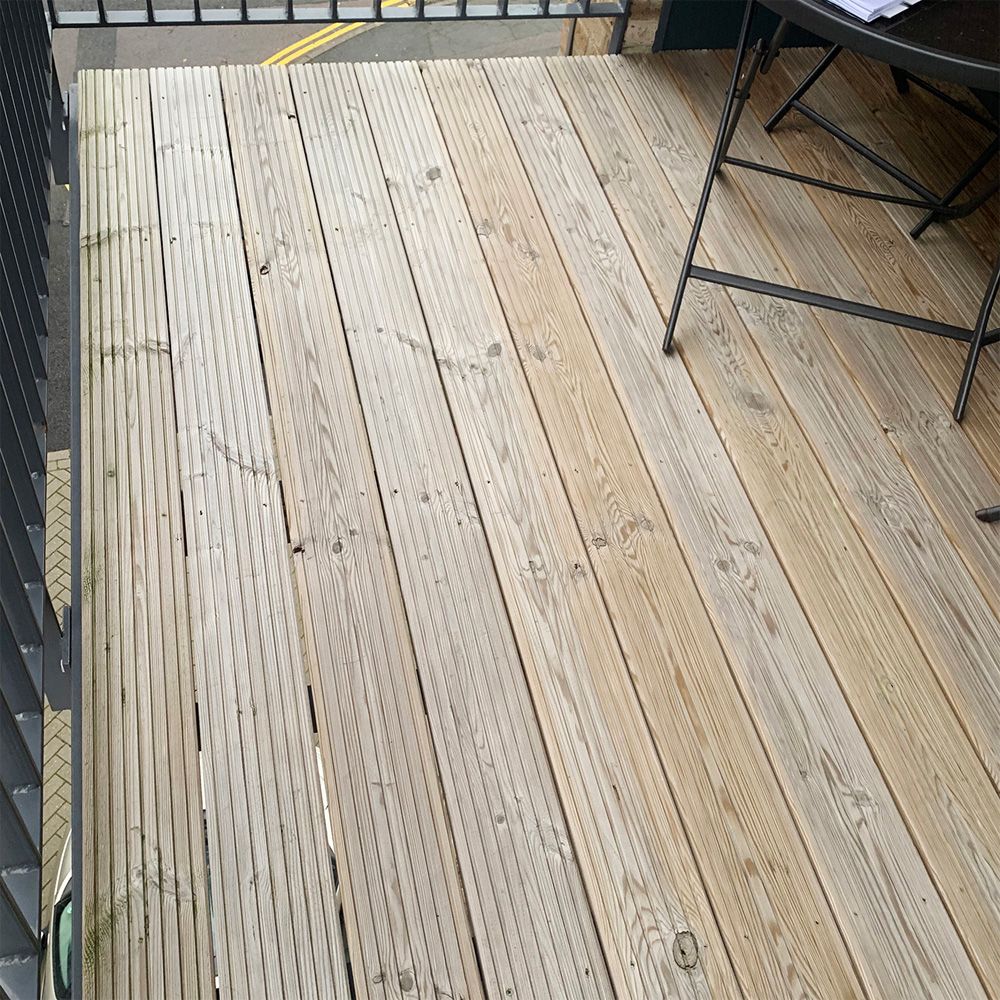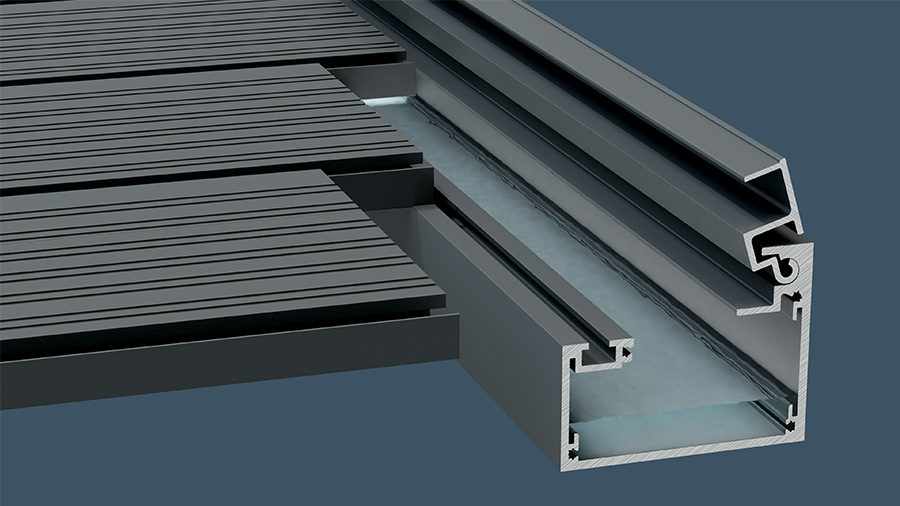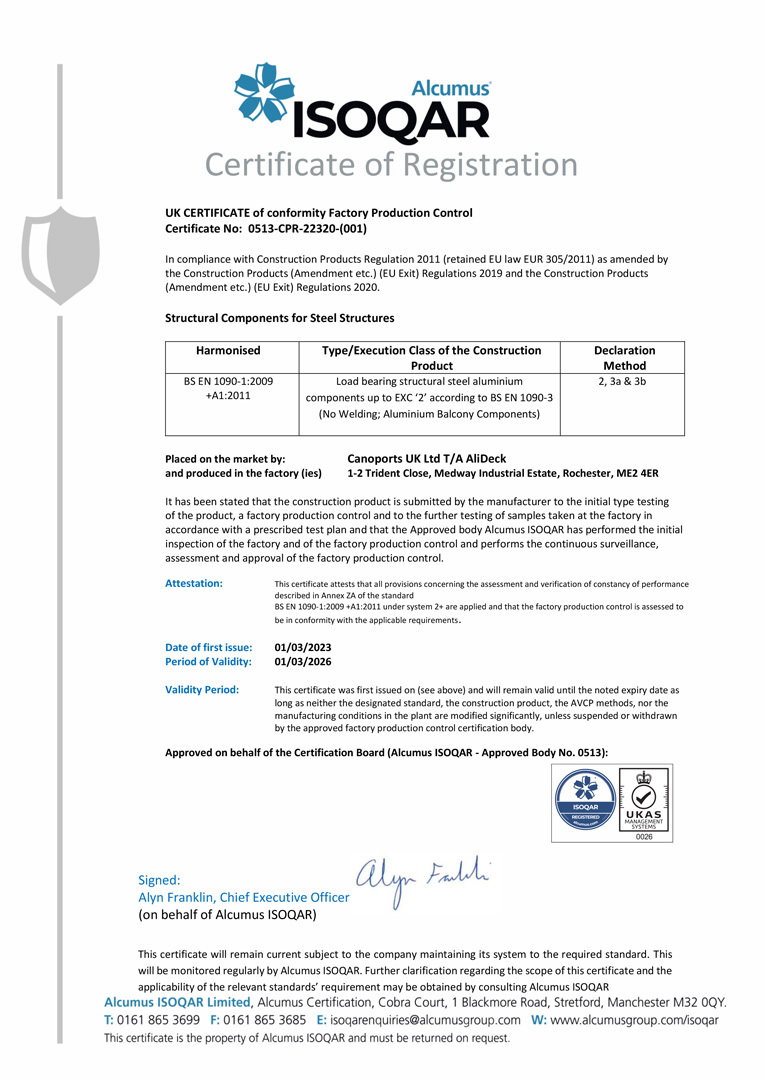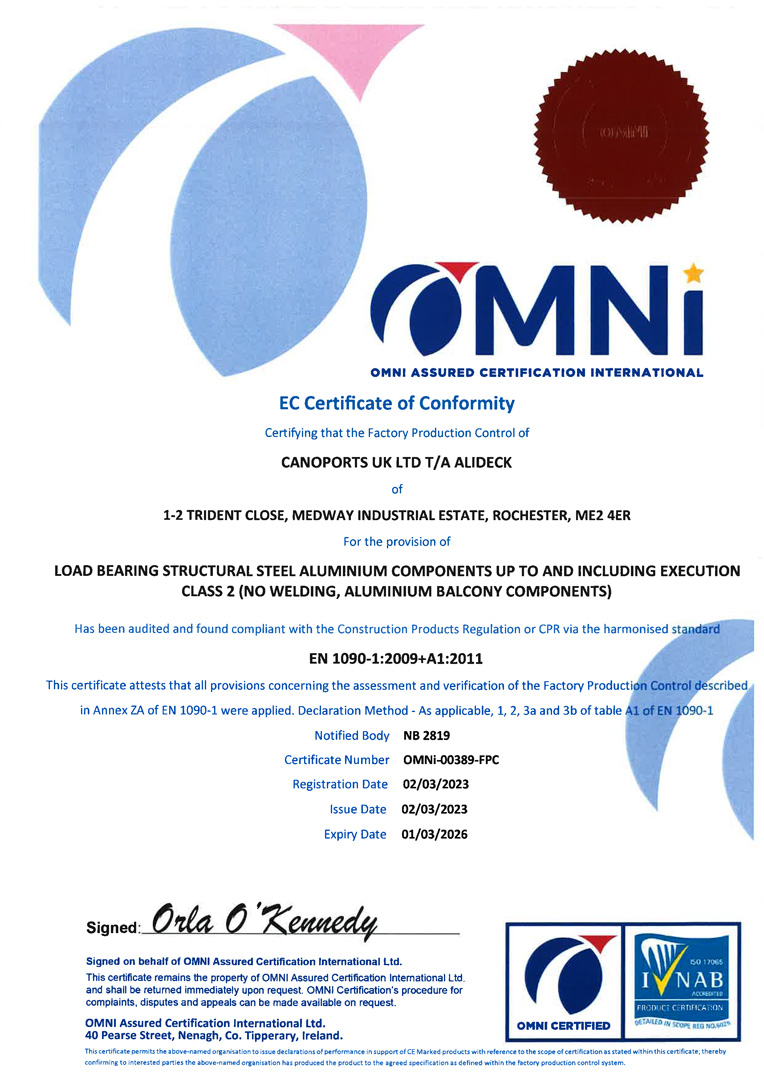Balcony drainage and BS8579, what are the requirements?
When BS8579:2020, the guide to the design of balconies and terraces, was published by BSI, the balcony industry finally had some firm guidance on best practice for the design, manufacture, and installation of balconies and their constituent components, as well as direction on essential performance functionality.
Among the many requirements for balcony function in is the drainage of water away from the decking surface and to help prevent ingress into the building. Additionally, in the days where balcony components such as joists were made of timber, moisture damage would quickly lead to rot and decay as well as nuisance to balconies and areas below. Now, though, with the innovation of aluminium alternatives we can achieve high-quality, durable, and future-proof designs to solve these challenges.

New guidance on balconies for a new regulatory construction landscape
With the comprehensive reviews on Building Regulations over recent years, all factors within balcony design must strictly adhere to the latest requirements, and best practice for this is contained within BS8579:2020, the balcony-specific British Standard. Architects and specifiers must be fully aware of the latest compliance measures and as a dependable and conscientious manufacturer we are here to help.
The drainage of balconies is crucial due to stringent requirements laid down in BS8579:2020, the guide for balcony and terrace design, as well as similar requirements imposed by the various Building Control organisations.

It is important to channel water away from the external envelope to avoid moisture being able to ingress into the building structure. Traditional balcony decking materials such as timber would absorb rainfall and spillages that fall upon it, over time this would lead to the decking looking tired and rotten, subsequently weakening the structure. Uncontrolled, free-flowing drainage easily stains walls and also causes annoyance and damage to areas beneath.
The AliDeck Balcony Drainage System has been carefully designed to meet the requirements of balcony manufacturers, steel fabricators, main contractors, architects, specifiers, and more. It is widely regarded across the industry as the de facto choice due to the level of innovation and its highly-effective functionality setting the standards.
Between each board we leave a 5mm gap in order to comply to the recommendation of BS8579:2020, which recommends a gap of 4-8mm. We choose 5mm as our standard as this prevents objects such as high heels from being able to wedge into the gap.
Our Drainage Channel component, sited between each decking board, forces this 5mm gap and allows water to effectively drain from the deck surface (referred to as “the pedestrian surface” in BS8579) and be directed to our Drainage Gutter at the board end and safely evacuated to rain-water pipes via an outlet.
Fully compliant, further innovations include a slip-resistant surface to avoid potential accidents from standing water. You can see all the specifications and information you may need on these factors on our aluminium decking board datasheets.
As you can see, meeting the strict requirements outlined for balcony drainage can be challenging. Fortunately, no challenge is too daunting for the AliDeck team! We’re always looking to solve a problem that doesn’t have a suitable existing solution and it is this passion for innovation that resulted in our Balcony Drainage System. Having built our success this way we are now able to share these results with our partners and help them achieve even more success on their projects.
If you would like to discuss the AliDeck Drainage System or any of the above in more detail, please contact our team on 01622 235 672 or email us via info@alideck.co.uk.








